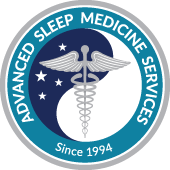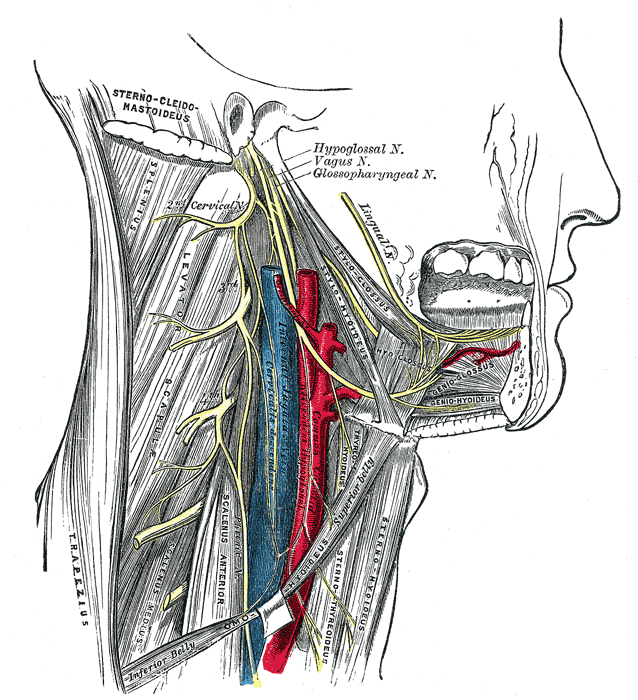While CPAP (continuous positive airway pressure) therapy is the gold-standard therapy for obstructive sleep apnea, we know that it isn’t easy. Barriers to compliance with CPAP therapy include the discomfort of sleeping while wearing a mask, having air blown through your airway all night, the inconvenience of traveling with a CPAP machine and the cost of the machine and replacement supplies. While CPAP is the only therapy that is 100% effective (when used) for sleep apnea, many sleep apnea sufferers search for alternatives (we cover a few here). In this blog post we’ll review an interesting option called hypoglossal nerve stimulation therapy (HGNS).
What is the hypoglossal nerve?
The hypoglossal nerve starts in the brain stem and goes down through the neck and comes up again over the tongue. It provides motor control for the muscles of the tongue and helps with important voluntary and involuntary functions like swallowing.
What is hypoglossal nerve stimulation ?
 Hypoglossal nerve stimulation (HGNS) is a relatively new treatment. It’s also known as upper airway stimulation or a “pace maker for the tongue.” The treatment works by stimulating the hypoglossal nerve to restore the tone to (or stiffen) the key tongue muscles that when relaxed, can block the airway causing an obstruction that reduces or stops breathing during the night (this is classic obstructive sleep apnea). The stimulating device (and battery) and breathing sensor are implanted in the chest and connected to a stimulation lead that touches the hypoglossal nerve. It’s turned on when you go to sleep and off when you wake up by a small hand-held remote.
Hypoglossal nerve stimulation (HGNS) is a relatively new treatment. It’s also known as upper airway stimulation or a “pace maker for the tongue.” The treatment works by stimulating the hypoglossal nerve to restore the tone to (or stiffen) the key tongue muscles that when relaxed, can block the airway causing an obstruction that reduces or stops breathing during the night (this is classic obstructive sleep apnea). The stimulating device (and battery) and breathing sensor are implanted in the chest and connected to a stimulation lead that touches the hypoglossal nerve. It’s turned on when you go to sleep and off when you wake up by a small hand-held remote.
Inspire developed the world’s first fully implanted neurostimulation device approved by the FDA for the treatment of OSA (shown below). The Inspire system uses neurostimulation technologies and incorporates a proprietary algorithm that stimulates key airway muscles based on a patient’s unique breathing patterns.
There are a couple of different manufacturers of devices. While both require surgical implantation, unlike other surgical options for sleep apnea, HGNS devices do not require removing or permanently altering the patient’s facial or airway anatomy. The implantation can usually be done as an outpatient procedure.
The devices cost about $20,000 in addition to cost of surgery. It is covered by some insurance companies on a case-by-case basis (read more about insurance coverage for sleep studies and CPAP).
Here’s a video from the Baylor College of Medicine which shows the mechanics of sleep apnea how this therapy keeps the airway open.
Is hypoglossal nerve stimulation an alternative to CPAP therapy for sleep apnea?
HGNS may be an alternative therapy for some people with obstructive sleep apnea.
There have been several studies to evaluate the use of HGNS therapy for patients with varying severity of sleep apnea.”With HGNS, airflow increased in all of our patients, and increased progressively with stimulus amplitude,” according to Alan R. Schwartz, MD, medical director of the Sleep Center at Johns Hopkins Bayview Medical Center. “The magnitude of the increases in airflow we observed indicate that HGNS can provide substantial relief of upper airway obstruction during sleep in these patients across a wide range of disease severity.”
The FDA criteria for clinicians prescribing this therapy, which is considered invasive and should not be first line treatment, is that CPAP therapy is tried for at least three months. The patient’s apnea-hypopnea index or AHI (learn more about this and other sleep study terms here) must be between 20 and 65. While the FDA did not set contraindications for obesity, Inspire recommends that patients have a BMI under 32. They must also undergo a thorough evaluation with an ENT (learn about different types of doctors who manage sleep patients here) which is explained by the VP of research at Inspire Medical here: “We’re looking for a very specific anatomy during the procedure,” Ni says. “We’re looking for a complete concentric collapse at the level of the soft palate. If the patient has a lateral wall collapse in addition to anteroposterior collapse of the soft palate, that’s a contraindication for Inspire.” Ni adds that about 10% to 20% of Inspire candidates cannot get the device due to this contraindication.
Are you of a loved one suffering from sleep apnea and need diagnosis or therap? Click the options below to get started with testing or to find out about options for therapy.
Sources:
https://sleepfoundation.org/sleep-news/hypoglossal-nerve-stimulation-increases-airflow-during-sleep-obstructive-sleep-apnea
http://imtheramedical.com/cpap-alternative/
https://www.inspiresleep.com
http://www.ncbi.nlm.nih.gov/pubmed/23813525
Other posts you may find interesting:


